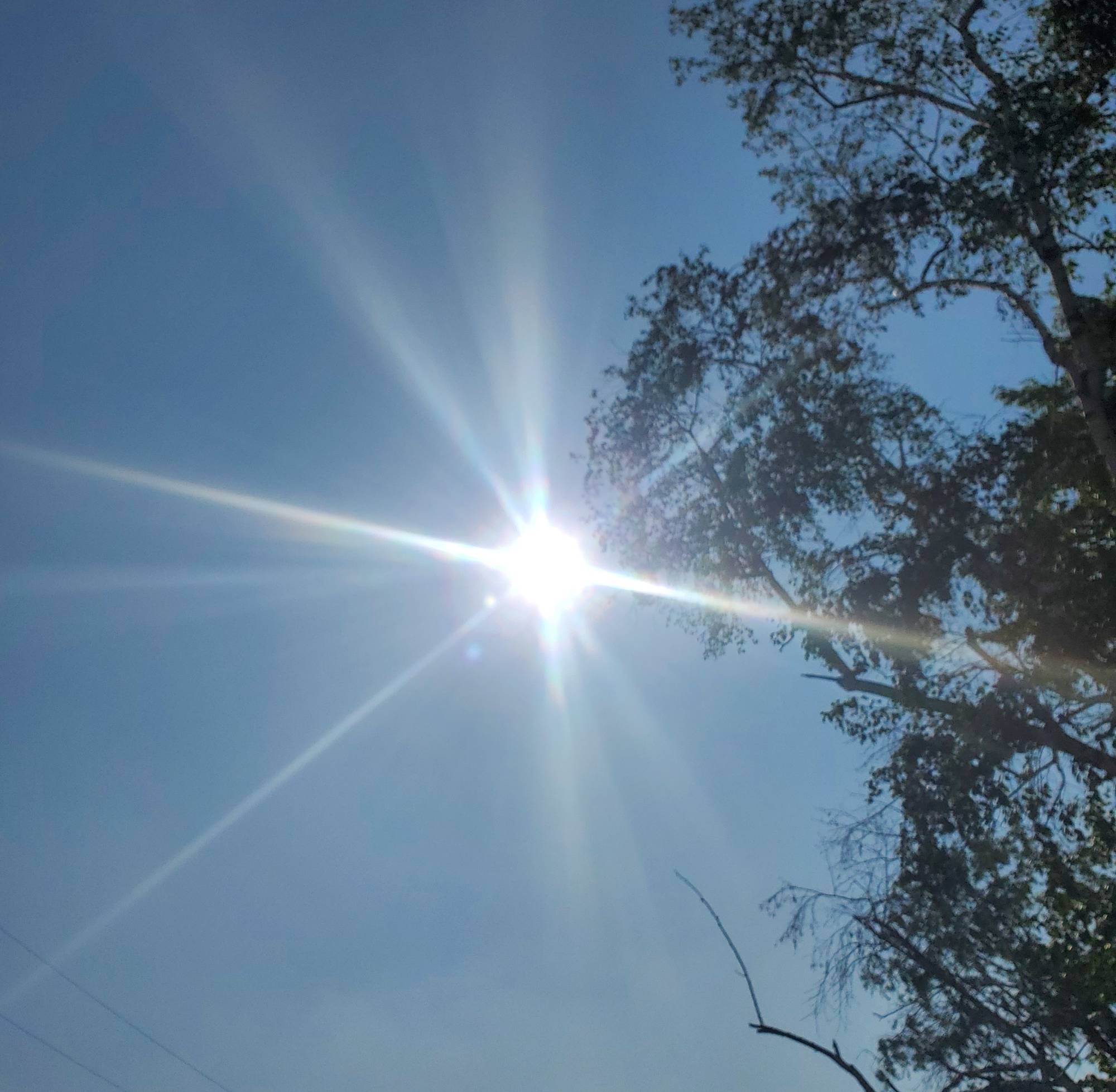Climate Paradoxes
Pick a Paradox
MCL strives to add a new paradox every other month to this page. If you would like to share a climate paradox here, or provide us with feedback on our content, please email us ([email protected]) with a brief description of the paradox, its resolution, and all related references and links.
Paradoxes:
The Faint Young Sun Paradox
Paradox: During the time of very early Earth called the Archean (3.8 to 2.5 billion years ago), the Sun was only at about 75% of its current luminosity. According to the now classic hypothesis from Carl Sagan and George Mullen published in the journal Science in 1972, at such a reduced solar luminosity, the Earth should have been completely frozen over. But there is ample evidence from the geological record that it was warm with liquid water and the first vestiges of life. Atmospheric temperatures were probably as warm as today and some argue that it was probably a lot warmer than today making it one of the hottest periods of Earth history (Knauth and Lowe, 2003; GSA Bulletin). Hence the paradox.
Resolution: While the Sun was much fainter during the Archean, the Earth's atmosphere also had a much different composition than it does today. The atmosphere consisted of much higher concentrations of carbon dioxide, methane, and ammonia than today, and no free oxygen (see Wiechert, 2002, Science). All of those gases except oxygen are potent greenhouse gases which are thought to have trapped heat in the atmosphere and made the Archean a significantly hot time in Earth history (see Charnay et al., 2020; Space Science Reviews).
Suggested Further Reading:
- "The faint young Sun problem" (Feulner, 2012, Reviews of Geophysics)
- "The Archaen atmosphere" (Catling and Zahnle, 2020; Science)
- "Investigating the early Earth faint young Sun problem with a general circulation model" (Kunze et al., 2014; Planetary and Space Science)
- "Faint young Sun problem more severe due to ice-albedo feedback and higher rotation rate of the early Earth" (Kienert et al., 2012; Geophysical Research Letters)
- "Hydrogen-nitrogen greenhouse warming in Earth's early atmosphere" (Wordsworth and Pierrehumbert, 2013, Science)

The Dance Between Temperature and Atmospheric Carbon Dioxide - The Lead/Lag Paradox
Paradox: Carbon dioxide is a potent greenhouse gas and its release through industrial and agricultural activities to the atmosphere at rates unprecendented by any natural process is the main cause for modern global warming. Mann at. al's (1989) hockey stick graph shows how quickly and how far off the natural trend temperature has increased globally as a result of human activities. So, the greater the carbon dioxide composition of the atmosphere, the higher the temperatures.
The now famous Vostok ice core from Antarctica took us much further back in time than the 1000-year record of the hockey stick and revealed a continuous nearly 800,000-year record of atmospheric composition and temperature with a seasonal resolution. Over two miles of ice! And one of the things that is so remarkable about this ice core record is the close correlation between changes in temperature and those in atmospheric carbon dioxide concentration. Another remarkable thing is that changes in temperature almost always precede changes in carbon dioxide concentration for 800,000 years! So, conversely to what is happening now, temperature changes led changes in atmospheric carbon dioxide concentration for 800,000 years, not the other way around. Hence the paradox.
Resolution: There is no argument that carbon dioxide is a greenhouse gas and the Earth's natural greenhouse effect is in large part dependent on this gas. Modern temperatures are rising because human activites are adding carbon dioxide and other greenhouse gases to the atmosphere at unnaturally fast rates, faster than any natural feedback mechanism can stabilize the change. However, the fluctuation of atmospheric temperature on a millennial timescale (glacial - interglacial, like Vostok ice core) is not caused by the changing concentration of greenhouse gases in the atmosphere but instead it is caused predominantly by where the Earth is in relation to the Sun. The Earth's three orbital parameters, the precession of its axis (wobble), the angle of tilt of its axis (obliquity), and the shape of the Earth's orbit (eccentricity), change in a regular, rhythmic way over time. These three parameters acting together primarily drive how much solar energy the Earth receives at any time, essentially causing glacials when solar energy received is low and interglacials when this energy is high. These are called Milankovitch cycles. It is this fluctuation of temperatures that causes carbon dioxide to be sequestered in ocean deep waters during glacials and released out leading to interglacials. Mekik et al. (2012) provide a summary for the development of this hypothesis. So, over thousands of years, temperature leads atmospheric carbon dioxide concentration - a very different scenario than the one playing out today.
Suggested Further Reading:
- Barnola, J.-M., D. Raynaud, A. Neftel, and H. Oeschger. 1983. Comparison of CO2 measurements by two laboratories on air from bubbles in polar ice. Nature 303:410-13.
- Barnola, J.-M., D. Raynaud, C. Lorius, and N.I. Barkov. 2003. Historical CO2 record from the Vostok ice core. In Trends: A Compendium of Data on Global Change. Carbon Dioxide Information Analysis Center, Oak Ridge National Laboratory, U.S. Department of Energy, Oak Ridge, Tenn., U.S.A.
- Lorius, C., Jouzel, J., Raynaud, D., Hansen J., and Le Treut, H., 1990. The ice core record: climate sensitivity and future greenhouse warming. Nature, vol347, p. 139 - 145.
- Lüthi, D., et al. 2008. EPICA Dome C Ice Core 800KYr Carbon Dioxide Data. IGBP PAGES/World Data Center for Paleoclimatology Data Contribution Series # 2008-055. NOAA/NCDC Paleoclimatology Program, Boulder CO, USA. (If accessing the data from this CDIAC site, please add: "accessed from the Carbon Dioxide Information Analysis Center, Oak Ridge National Laboratory, U.S. Department of Energy").
- Petit, J.R., J. Jouzel, D. Raynaud, N.I. Barkov, J.-M. Barnola, I. Basile, M. Benders, J. Chappellaz, M. Davis, G. Delayque, M. Delmotte, V.M. Kotlyakov, M. Legrand, V.Y. Lipenkov, C. Lorius, L. Pépin, C. Ritz, E. Saltzman, and M. Stievenard. 1999. Climate and atmospheric history of the past 420,000 years from the Vostok ice core, Antarctica. Nature 399: 429-436.
Present is the Key to the Past - The Climate Paradox
Paradox: Uniformitarianism is a fundamental principle for Earth scientists purporting that the "present is the key to the past." This came about as the vastness of Earth's age (3.8 - 4.6 billion years old) started becoming clear to scientists. In a nutshell, this idea says that whatever natural processes are at play today, at their current rates, these processes probably happened in the same way and at similar rates throughout Earth history. So no need for short lived catastrophes to explain natural changes. However, the climate of the Holocene, or even the last million years, is very different from the climate 65 million years ago when the dinosaurs became extinct, or at other times in Earth history. In fact, climate is one thing that changes to extremes throughout Earth history, and the present is NOT the key to past as far as Earth's climate is concerned. Hence the paradox.
Resolution: On this one there really is no resolution other than accepting climate change as an exception to the rule of uniformitarianism, both natural and anthropogenic.
References/Further Reading:
- Eddy, J.A. (1988). Variability of the Present and Ancient Sun: A Test of Solar Uniformitarianism. In: Stephenson, F.R., Wolfendale, A.W. (eds) Secular Solar and Geomagnetic Variations in the Last 10,000 Years. NATO ASI Series, vol 236. Springer, Dordrecht. https://doi.org/10.1007/978-94-009-3011-7_1
- Paul, J. D., 2015. A question of uniformitarianism: Has the geological past become the key to humanity's fututre? Anthropocene, vol. 9, p 70 - 74. https://doi.org/10.1016/j.ancene.2015.05.005

